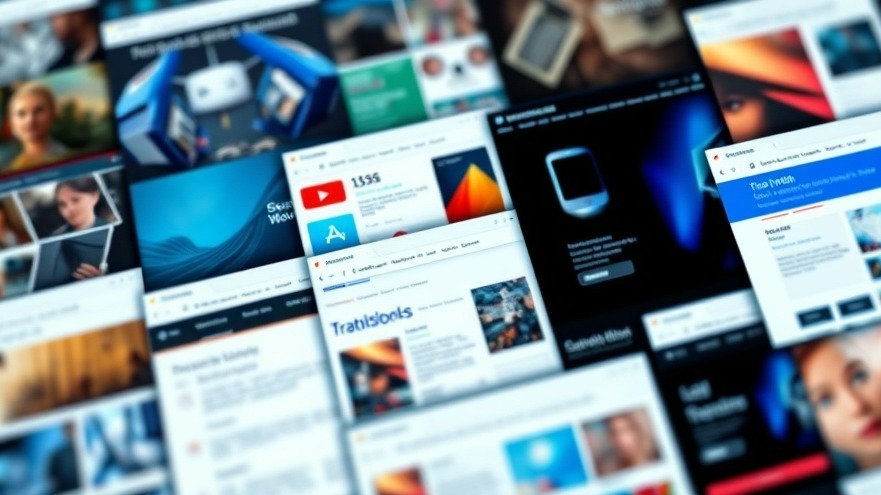
Understanding the Impact of Dribbble on Web Design
The evolution of web design has taken some significant turns over the years, particularly with the rise of platforms like Dribbble. Initially praised for fostering creativity among designers, many now argue that it has diluted real artistic expression.
The Shift from Functionality to Aesthetics
Dribbble emerged as a space for designers to share their works in progress. However, a substantial shift occurred with the introduction of likes and followers, which heralded a new focus: aesthetics over usability. Rather than crafting practical websites, many designers began to chase applause with visually striking—but functionally lacking—creations.
What Designers Have Lost in the Dribbblization of Creativity
According to critics, in the race for 'likes', designers have lost essential elements of web design:
Functionality: Designs that grab attention in a static shot often miss out on practical user experience. Buttons may look elegant, but if users can’t easily navigate, then the design fails its fundamental purpose.
Context: Many showcases on Dribbble exist in isolation. Without actual navigation or content, the designs lose their essence, showcasing an unattainable beauty instead of functional clarity.
Grit: The challenges of real-world web design—including limited resources and stringent deadlines—are often lost in the glossy showcases of Dribbble. This disconnect can stifle true innovation that comes from problem-solving.
Navigating the Aesthetic Echo Chamber
As Dribbble flourished, a concerning trend emerged: a loss of originality. Designs began to mirror each other, leading to a form of aesthetic groupthink that stifled creative risk-taking. The result? A web filled with similar gradients and rounded corners, causing brands to blend into the background rather than stand out.
The Audience Creators Must Remember
One of the biggest misconceptions within the Dribbble community is the assumption that their audience consists of intended users. Most individuals engaging with these designs are fellow designers, not clients or users. This detachment can lead to a total misalignment of design goals—where aesthetics triumph over usability.
Moving Beyond Dribbble: A Call for Real Creativity
For franchisors and brand managers, recognizing the difference between stunning visuals and actual user experience is crucial. As your brand endeavors to uphold consistency and operational excellence across multiple locations, consider these practical insights:
Reinforce the importance of user-centric design within your teams.
Encourage prototyping and usability testing early in the design process.
Educate your teams about the pitfalls of designing for an echo chamber.
Promote an environment where functionality and aesthetics must coexist.
In essence, embracing a balance between beauty and usability can help franchises create better digital experiences that resonate more meaningfully with their audiences and improve overall brand performance.
 Add Row
Add Row  Add
Add 




Write A Comment